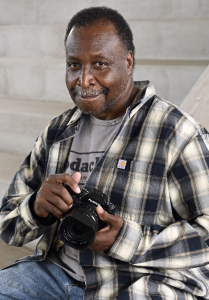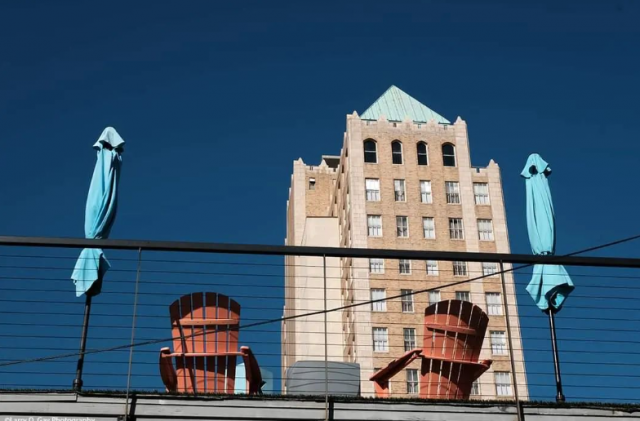By Ryan Michaels
The Birmingham Times
The first time he set foot in a darkroom, Larry O. Gay said, he was hooked.
“It was like magic, and once I did the first roll of film and did my first print, that pretty much was it,” said Gay, who has been taking pictures since the 1980s.
(Before the advent of digital photography, darkrooms were used to turn exposed film into photographs)
At the time, Gay was a student at Bessemer State Technical College, now a campus of Lawson State community college, on Ninth Avenue in Bessemer. He had been studying commercial art and needed a black-and-white photography course to finish up.
With a Pentax K1000, a fully manual model first sold in 1976, Gay said he took pictures of a variety of subjects in the class. However, he found a particular love for shooting architecture, “old buildings.”
Some of his favorite old buildings include the John Hand and City Federal buildings in downtown Birmingham, as well as architecture found in the city’s Five Points South neighborhood.
“I like the old architecture. I just love the design of it. It’s just like everything, pretty much, was made by hand instead of machine at that time,” the photographer said.
After finishing up his black-and-white photography course, Gary said he continued to shoot on the weekends, driving into rural Alabama with his camera to shoot buildings across the state.

However, Gay, 66, said his focus began to shift more toward urban street photography in the late 1990s with a focus on people when he found downtown Birmingham filled with people.
“When I was doing architecture, there weren’t too many people in the street at the time, and later, on when people start coming back into town…people have just always interesting to me, so I just started photographing people,” Gay said.
That people-focused approach has even led to Gay shoot his own version of selfies something he doesn’t normally like to do.
“Every once in a while, if it’s a reflection or something in a glass, and I kind of want to use the background with an image in it, and I don’t see anyone else on the street, sometimes I put myself in it,” he said.
While Gay came to photography before the popularity of digital cameras and cell phone photography, he now shoots entirely in digital.
“With film, you had to be selective because of the price of the film and the process, so I tried to carry that over to digital. I try not to just fire away, unless it’s just a fleeting moment at the time…, but I still like to just view the image in camera and just shoot like I did,” Gay said.
Gay said one of his favorite cameras today is the Canon EOS-1D X; it’s a little heavy for carrying around on the street so he can often be found shooting with either his Sony a6500 or his Fujifilm X10.
While smartphones are convenient, Gay said he never finds a reason to shoot stills using a phone, since he’s always got a better camera on him. Sometimes, though, Gay said he will shoot short video clips on his smartphone an upload them to Facebook and Instagram.
Despite digital photography’s ease and cost efficiency, though, Gay said he would like to shoot film again and remembers fondly the quality of color in a film like Kodak’s Kodachrome.
Today, pretty much everybody “is a photographer,” Gay said, with cell phones, but a personal investment of time and energy is still needed for improvement, he said.
“It’s just a matter of getting out and putting the time in. Just try to be creative with whatever vision you have or whatever you want to photograph. Just go out, and just do it,” Gay said.
View some of Larry O. Gay’s work on Instagram here or his Facebook page: www.facebook.com/larry.o.gay




